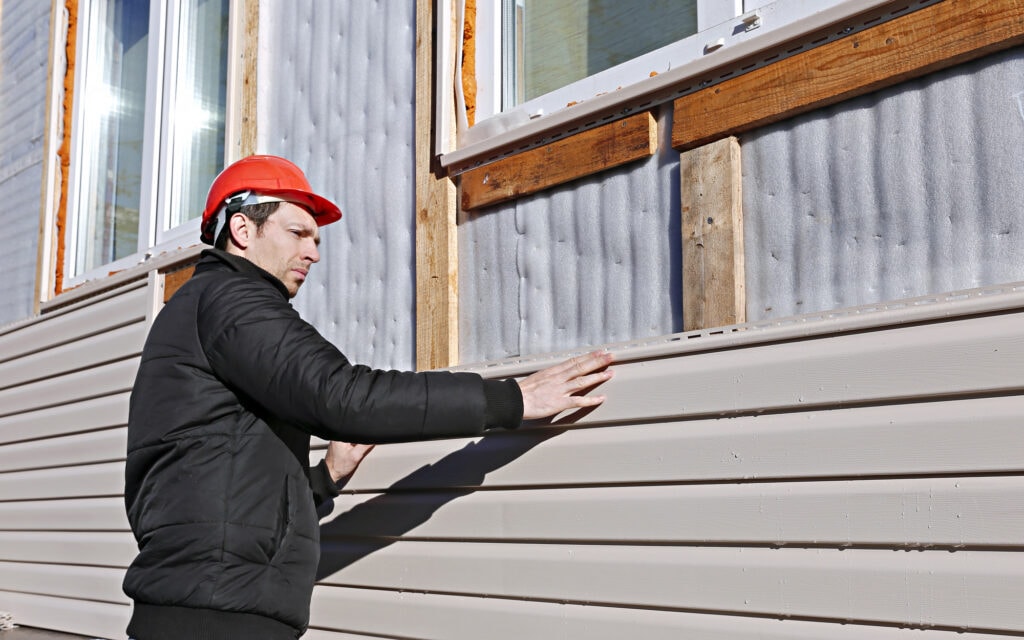Vinyl Siding SOS: Expert Advice and Solutions
Installing siding on your home is an excellent way to enhance its durability. It shields your exteriors from weather fluctuations.
It also shields your exteriors from external elements that could potentially damage your property.
Various materials can be utilized as siding. This includes wood, metal, and fibre cement, among others.
However, vinyl sidings stand out as a popular choice for many homeowners.
With a wide range of colours and finishes available, this can easily complement most home styles.
Additionally, it is often regarded as one of the most budget-friendly options for exterior siding.
Nevertheless, it’s important to note that vinyl may not offer the same level of durability as other siding materials.
Below, we discuss some of the most prevalent problems associated with vinyl siding.
Fading
Most of these have UV protection. But this layer tends to fade over time, especially when it’s exposed to sunlight.
Aesthetically speaking, it’s alright if the whole siding is directly exposed to sunlight.
But if there are only certain parts that get more sunlight than others, the discoloration may be bothersome.
Fading doesn’t affect the quality all that much. This is more or less just an aesthetic issue.
But if left long enough, it could also cause your siding to start cracking.
Hail and Wind Damage
Hail and strong winds could cause dents.
The minor impact from hail or wind is mostly a cosmetic issue, as it could make your siding look old and worn out.
When objects like hail, branches, or balls hit a vinyl siding, they could cause cracking. Cracks should be addressed immediately.
If not, moisture could crawl into your siding and cause further damage.
Besides damaged siding, you might also have to deal with mould, leaks, and rotting.
Roof Issues
While the roof seems like an independent and different unit of a house, it could also cause damage to your siding.
After a storm hits your area, it’s important to check your roof for any damage.
Missing, curled, or cracked shingles need to be replaced as soon as possible.
Moisture could get into these holes or cracks and affect your siding, too.
Bad Installation
Bad installation is a common problem with vinyl siding. It cannot be installed too loosely or too tightly as it expands and contracts with the weather.
You have to allow for these adjustments to keep it in its best condition.
If it’s installed too tight may cause it to crack as it expands in hot weather and contracts in cold weather.
If it’s installed too loose may cause unwanted noises, especially during a storm or when strong winds are present.
Loud Siding
One of the most common problems with vinyl siding is the noise.
It does make noises that are considered normal, though. This comes from it not being installed too tightly.
Noise doesn’t always mean that your vinyl siding has problems.
But winds could cause vinyl siding to rattle and make loud noises that could be too bothersome.
It may be a result of bad installation, in which case you should have it checked and repaired immediately.
As vinyl siding expands and contracts with the weather, you might also hear popping or creaking noises from it.
If you live in an area where the temperature changes drastically from morning to evening, these noises could be a point of concern.
How to Fix and Avoid Vinyl Siding Problems
Hidden Damage: Moisture Issues
Damage may occur inside vinyl siding without detection, particularly from moisture problems.
Moisture-related damage often goes unnoticed until significant harm has already been done to the house.
To fix moisture issues for vinyl siding, identify the source of moisture and repair or replace damaged siding.
You should also improve drainage, seal joints and gaps, install a moisture barrier, and improve ventilation.
Waterproofing
Vinyl siding cannot be installed with an airtight seal.
Investing in high-quality waterproofing materials is crucial. This is to prevent moisture from entering the interiors and increase the durability of vinyl siding.
Sunlight Fading
Vinyl siding can fade when exposed to sunlight.
Faded color cannot be easily reversed.
Options for addressing fading include replacing or repainting the siding, and avoiding darker colours to prevent warping or buckling.
Prevention and Maintenance
Regularly inspecting exteriors is essential to identify and address issues early.
Awareness of potential problems is important to avoid overlooking minor issues.
Professional Assessment and Installation
Hiring professionals to assess the house’s condition is recommended.
Professionals can provide guidance on maintaining vinyl siding.
Professional installation minimizes potential future damage by ensuring the siding is properly installed to withstand weather changes.
The Bottom Line

Vinyl siding is versatile, durable, and affordable. It’s a good choice for exterior siding, which is why it’s popular and widely used.
Again, here are some of the most common vinyl siding problems you might encounter:
- Fading: It’s more of a cosmetic issue than anything else.
- Hail and wind damage: The minor impact is also more of a cosmetic issue. But when left unaddressed long enough, it could lead to cracking.
- Roof issues: Holes and cracks on your roof can cause moisture to seep into the cracks and get under your vinyl siding.
- Bad installation: Installing a vinyl siding too tight or too loose will cause problems like cracking or loud noises.
- Loud siding: Badly installed siding makes loud noises that can be bothersome.
When considering siding options for your house, explore the pros and cons of various materials to find the best fit.
For expert guidance and professional installation, reach out to Fortress Roofing, your trusted partner in achieving a durable and beautiful exterior.




